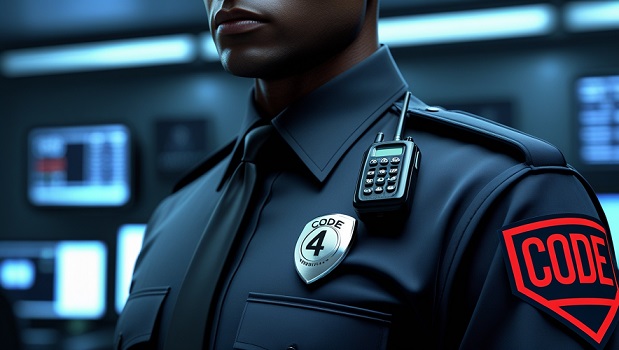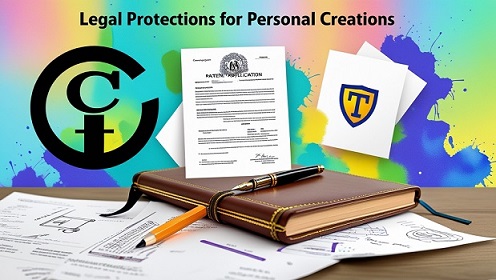Private security professionals play a crucial role in maintaining safety and order in various environments, from corporate offices to event venues. To ensure smooth communication and quick responses, security teams use standardized codes—similar to those used by law enforcement. One such code, Code 4 Private Security, is essential in private security operations.
In this blog post, we’ll explore:
- What Code 4 means in private security
- How it differs from other security codes
- When and why it’s used
- Best practices for security teams implementing radio codes
By the end, you’ll have a clear understanding of Code 4 and its importance in security operations.

What Does Code 4 Mean in Private Security?
Code 4 is a radio communication code used to indicate that a situation is under control and no further assistance is needed. It signals that an incident has been resolved, a threat has been neutralized, or backup is no longer required.
Common Scenarios Where Code 4 Is Used:
- After Resolving a Disturbance – If security personnel handle an unruly individual or a fight, they may call Code 4 once the situation is stabilized.
- Completing a Check-In – Officers patrolling a facility might use Code 4 to confirm that an area is secure.
- Canceling Backup Requests – If additional officers were called but are no longer needed, Code 4 communicates that they can stand down.
Unlike emergency codes like Code 3 (urgent response) or Code 99 (officer in distress), Code 4 is a reassuring signal that everything is back to normal.
How Code 4 Differs from Other Security Codes
Private security teams use a variety of radio codes for efficient communication. Here’s how Code 4 compares to other common codes:
| Code | Meaning | Usage |
|---|---|---|
| Code 1 | Routine response | Non-urgent situations |
| Code 2 | Urgent but no lights/sirens | Faster response without emergency signals |
| Code 3 | Emergency response | Immediate action required (lights & sirens) |
| Code 4 | Situation under control | No further assistance needed |
| Code 5 | Stakeout or surveillance | Observing a suspect discreetly |
| Code 99 | Officer needs help | Emergency backup required |
While Code 4 is a positive signal, misusing it can lead to confusion. For example, if an officer prematurely declares Code 4 before fully assessing a threat, it could leave the team vulnerable.
Why Code 4 Is Critical in Security Operations
1. Prevents Over-Response
Security teams often operate with limited personnel. If an officer calls for backup but later resolves the issue, Code 4 ensures unnecessary resources aren’t wasted.
2. Enhances Communication Efficiency
Instead of saying, “The situation is under control; you can return to your post,” a simple “Code 4” keeps radio traffic concise.
3. Reduces Panic in Public Settings
In crowded venues like concerts or malls, hearing Code 4 reassures other officers (and sometimes nearby staff) that there’s no ongoing threat.
4. Helps in Incident Reporting
Security logs often include timestamps of when Code 4 was declared, helping supervisors review response times and effectiveness.
Best Practices for Using Code 4 in Private Security
To maximize the effectiveness of Code 4, security teams should follow these best practices:
1. Verify Before Declaring Code 4
- Ensure the threat is fully neutralized.
- Confirm no hidden risks remain (e.g., additional suspects, weapons).
2. Use Clear Radio Protocols
- Avoid mumbled or rushed transmissions.
- Example: “Central, this is Unit 12—Code 4 at the south entrance.”
3. Train All Personnel Consistently
- New hires should memorize radio codes.
- Conduct mock scenarios to practice proper Code 4 usage.
4. Combine with Additional Updates When Needed
If a situation escalates after declaring Code 4, officers should immediately update the team (e.g., *“Cancel Code 4—suspect re-engaged!”*).
Real-World Example of Code 4 in Action
Scenario: A security officer at a nightclub notices a physical altercation between two patrons.
- Initial Call: “Central, Unit 7—Code 3 at the bar, fight in progress.”
- Backup Arrives: Two additional officers intervene and separate the individuals.
- Resolution: “Central, Unit 7—Code 4, subjects detained. EMS not needed.”
By using Code 4, the team efficiently communicates that the scene is secure without unnecessary radio chatter.
Potential Misuses of Code 4 (And How to Avoid Them)
While Code 4 is helpful, mistakes can compromise security:
Premature Declaration – Calling Code 4 too soon can leave officers unaware of lingering dangers.
✅ Solution: Double-check the scene before confirming.
Assuming Everyone Heard – In noisy environments, transmissions may be missed.
✅ Solution: Request acknowledgment (“Unit 7, confirm Code 4 received.”).
Overusing the Code – If officers use Code 4 for minor issues, it may lose its urgency.
✅ Solution: Reserve it for genuine “all clear” situations.
Code for Personal Creations: Protecting Your Intellectual Property

What Is a “Code for Personal Creations”?
The term “code for personal creations” refers to the legal and technical frameworks used to protect original work. This includes:
- Copyrights – Protects written, artistic, and musical works.
- Patents – Secures inventions and technical innovations.
- Trademarks – Shields brand names, logos, and slogans.
- Licensing Agreements – Defines how others can use your work.
Just as software developers use source code licenses (like MIT or GPL), creators in other fields must establish their own “codes” to control how their work is used.
Types of Legal Protections for Personal Creations
1. Copyrights (For Creative Works)
- What it covers: Books, music, paintings, photographs, software, and videos.
- How it works: Automatically applies upon creation (but registration strengthens legal claims).
- Example: A photographer copyrights their images to prevent unauthorized use.
2. Patents (For Inventions & Innovations)
- What it covers: Machines, processes, chemical formulas, and tech inventions.
- How it works: Requires filing with a patent office (complex and time-consuming).
- Example: An inventor patents a new type of eco-friendly battery.
3. Trademarks (For Brand Identity)
- What it covers: Business names, logos, slogans, and product packaging.
- How it works: Registered to prevent others from using similar branding.
- Example: Nike’s “Just Do It” slogan is trademarked.
4. Trade Secrets (For Confidential Information)
- What it covers: Recipes, algorithms, business strategies.
- How it works: Protected through NDAs (non-disclosure agreements).
- Example: The Coca-Cola formula is a trade secret.
5. Licensing (For Controlled Usage)
- What it covers: Terms under which others can use your work.
- How it works: Creative Commons, open-source licenses, or custom agreements.
- Example: A musician licenses their song for a commercial.
How to Secure Your Personal Creations
1: Document Your Work
- Keep drafts, timestamps, and development logs (useful in copyright disputes).
- Use tools like GitHub for code or Google Docs timestamps for writing.
2: Register Your IP (If Needed)
- Copyrights: Register with the U.S. Copyright Office (or your country’s equivalent).
- Patents: File through the USPTO or WIPO for international protection.
- Trademarks: Apply via the USPTO or EUIPO (for Europe).
3: Use Watermarks & Digital Locks
- Artists: Add invisible watermarks to digital art.
- Writers: Use DRM (Digital Rights Management) for e-books.
4: Set Clear Licensing Terms
- For software: Choose between MIT, GPL, or proprietary licenses.
- For art/music: Specify usage rights (e.g., “free for non-commercial use”).
5: Monitor & Enforce Your Rights
- Use reverse image search to find stolen artwork.
- Send DMCA takedown notices for unauthorized online use.
Common Mistakes to Avoid
Assuming “Automatic” Copyright Is Enough
- While copyright applies immediately, registration helps in lawsuits.
Not Using NDAs for Collaborations
- If sharing unfinished work, always use a non-disclosure agreement.
Ignoring International Protection
- Copyrights and trademarks are often country-specific—consider global filings.
Overlooking Licensing Terms
- Accidentally using “free for commercial use” fonts/images can lead to legal trouble.
Final Thoughts
Code 4 is a small but powerful part of private security operations. When used correctly, it streamlines communication, prevents unnecessary mobilizations, and keeps teams aligned. Whether you’re a security professional or someone working alongside them, understanding these codes helps foster a safer environment.
Key Takeaways:
✔ Code 4 = Situation under control
✔ Prevents wasted resources and over-response
✔ Must be verified before declaring
✔ Training and consistency are crucial
By mastering Code 4 and other security protocols, teams can operate more efficiently and respond effectively to real threats.
Your personal creations are valuable—don’t leave them unprotected. By understanding copyrights, patents, trademarks, and licensing, you can control how your work is used and prevent theft.
Key Takeaways:
✔ Copyright = Automatic but registration helps
✔ Patents protect inventions (but require filing)
✔ Trademarks secure brand identity
✔ Licensing defines how others use your work
✔ Always monitor for unauthorized use
Whether you’re a writer, artist, developer, or inventor, establishing a “code for personal creations” ensures your hard work remains yours.



